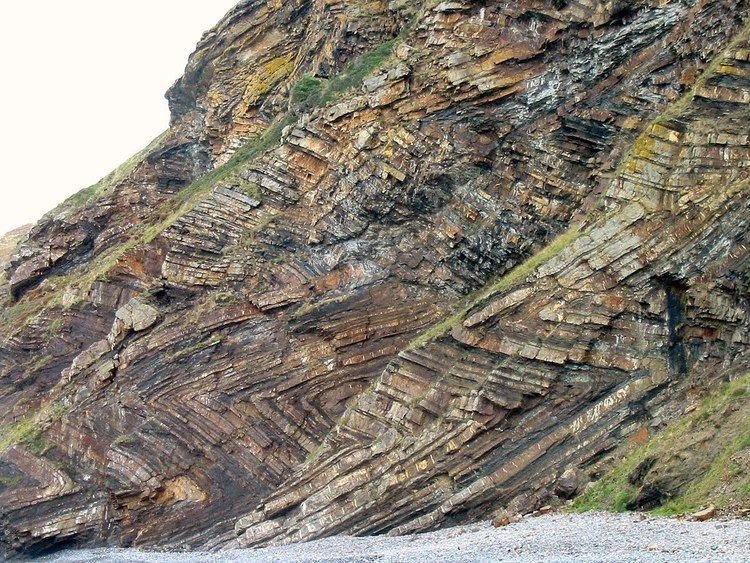 | ||
Killas is a Cornish mining term for metamorphic rock strata of sedimentary origin which were altered by heat from the intruded granites in the English counties of Devon and Cornwall. The term is used in both counties.
Contents
Origin
The deposition of the killas strata occurred during the Devonian and Carboniferous geological periods. The sediments are not evenly spread over the county, with the Carboniferous beds only found in the far north of Cornwall.
The depositional environments of the killas were very varied, as is revealed by the fossil content and the sedimentary sequences. The fossils indicate changes from anaerobic, deep ocean-basin environments to shallow sea environments. The deformed brachiopod fossil Cyrtospirifer verneuili, known to quarrymen as the Delabole Butterfly, was found in the upper Devonian beds of North Cornwall.
Shortly after the deposition of the sediments, the Variscan orogeny caused the intrusion of the Cornubian batholith and the subsequent contact metamorphism created the metamorphic rocks seen today. This also put intense pressure on the sediments causing them to be folded and faulted. This is most apparent in the cliffs at Millook Haven on the north Cornwall coast, where the cliffs display an impressive series of angular recumbent folds.
Economic uses
Killas underlies two thirds of Cornwall and on and around Dartmoor in Devon, and as a result of hydrothermal mineralization from the granites, contain the majority of the mineral lodes or veins which at one time provided up to half of the world's tin and copper, and economic prosperity to Cornwall (and to a lesser extent Devon). Of lesser economic importance, the stone itself is an important building and roofing stone in Cornwall, the largest single source in the county being Delabole slate quarry, which has provided a high quality stone for at least six centuries.
